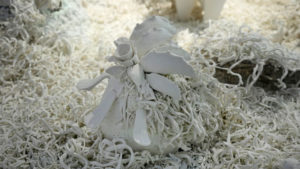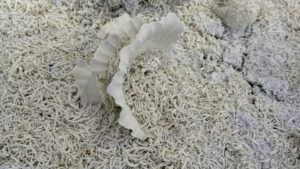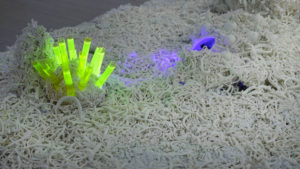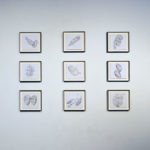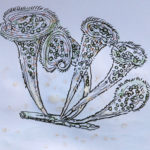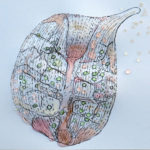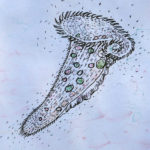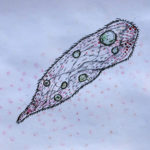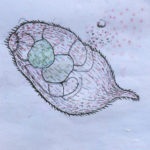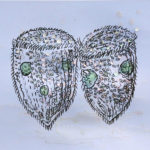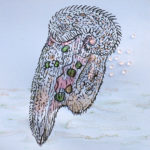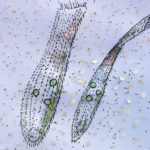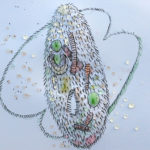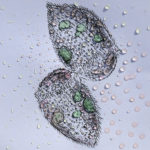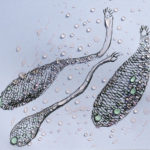Curators: Cila Brosius & Tijana Miskovic.
The exhibition explores a variety of ocean-related topics through different artistic media and conceptual approaches. In our increasingly polarized world, it seems pertinent to focus on interconnectivity, which is what the fluidity of the water allows us to embrace. Sensing the Sea is not only crosses geographical borders, but also invites us to think beyond the ideological, bodily and disciplinary boundaries.
NAC, Nordic Contemporary Art Center, Xiamen, China.
With Christine Laquet, Arendse Krabbe, Gedske Ramløv, Karen Land Hansen, Mariana Gomes Gonçalves, Nina Wengel and Studio ThinkingHand — Thanks to Pays de la Loire Region, Loire-Atlantique Department, ADAGP, Roscoff Marine Station, and Sorbonne University/CNRS grants. — Sensing the Sea, previously shown at SAK Kunstbygning in Svendborg (DK) has adjusted and transformed to a Chinese context in the port city of Xiamen, opening for new dialogues across cultures and geographical areas.
Christine Laquet presents works about the marine microcosm that all deal with cross-pollination, advocating for symbiosis both as a key to survival, and changing our anthropocentric world view. To better understand the ocean eco-biological realm, she collaborates closely with scientists from the Roscoff Marine Biology Station (FR). She films researcher’s gestures while sampling sea organisms (Neomysis), as much as she uses her own observation tools by reversing the roles of artist and scientist. In Drawing With The Tide, Fabrice Not -whose research focuses on the ecology and evolution of plankton and photosymbiosis- films her drawing on the foreshore, while the tide rises. For several months, Laquet cultivated cyanobacteria from five different seas ; These single-celled organisms not only allowed the appearance of life 2.5 billion years ago, but they still produce 20% of the earth’s oxygen today. The artist used these “living” pigments, capable of diffracting light to produce energy, in a series of drawings (Little Angry Dragons). In China, Laquet created Don’t You Sea Changes?, an underwater landscape modeled with white porcelain: an installation that highlights the beauty and fragility of the coral ecosystem, that address coral bleaching.
Don’t You Sea Changes?
Installation with white porcelain from Dehua (known as Blanc de Chine), video loop projection of Euglena (Nassula) at 1000x magnification, fluorescent pigment with water, 2 UV lights, 2024. Variable dimensions. Prod. Luzerne Factory and Cultural Creative Co.,Dehua
Don’t You Sea Changes? is a floor installation made of white porcelain. This underwater landscape is addressing coral bleaching, highlighting the beauty, fragility, and impending destruction of the coral reef ecosystem. Integrated to the installation, a projection of Euglena continues on the wall, a 1000 x magnification of mono-cellular species, exposing their vital role in shaping our biosphere akin to mythical creatures. Unable to be defined as plants, animals, male, or female, these ancient species challenge our perception of standard classification systems even today.
Little Angry Dragons (green – pink – red – orange – yellow)
Series of 15 drawings (21 x 22 cm each) using charcoal and cyanobacteria from five different oceans on paper, includes a pin-hole video of the drawing process, 2024
Producing 20% of the Earth’s oxygen today, cyanobacteria enabled the living thanks to photosynthesis 2.5 billion years ago. They diffract sunlight through their pigments to generate energy. With the help of scientists during her residency at Roscoff Marine Station (FR), Christine Laquet was able to cultivate and reproduce by cell division the cyanobacteria five “color’s niches” that can be found in the world’s seas. Thanks to a system of drops she placed on the paper, these “living pigments” colored her drawings, which tones will be fading leaving only drop traces and crystal salt. Little Angry Dragons is the colloquial name given by Prof. Ehrenberg, who discovered those ancestral single-celled organisms, which even today defy our perception of standard classification systems, because they don’t belong to any gender (neither animal nor vegetable, neither male nor female).
Neomysis (Collecting Phytoplankton)
Video (09:20 min.), 2024
Neomysis is the name of a boat that operates for various activities relating to observation, research and teaching in the fields of marine ecology, and oceanography. During her residency at the Roscoff Marine Station (FR), Christine Laquet participated in one of their ongoing missions called SOMLIT, which monitors the evolution of coastal and littoral ecosystems. In her film, Laquet focuses on the rigorous and choreographic gestures of the scientists while manipulating their measurement tools to collect marine organisms.
Drawing With The Tide
Video (04:12 min.), 2024 – Caméra: Prof. Fabrice Not
Photos credits: Christine Laquet, YE Shaobin, Ruei Li














